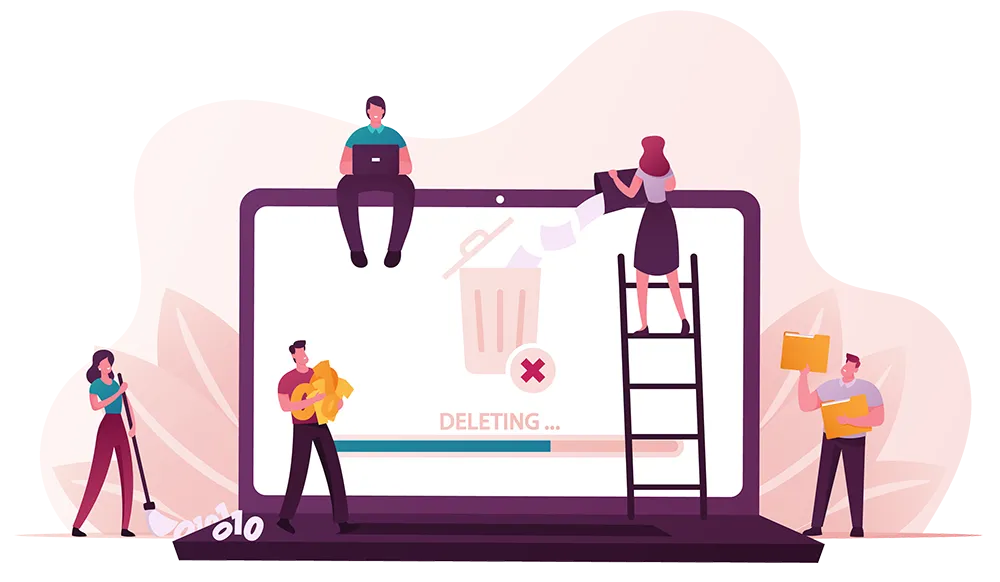Remove old documents & images
One great thing about Google is that it finds everything. One bad thing about Google, is that it finds everything. And this includes your outdated calendar from 2017 that was updated at least a dozen times that year due to the snow.
It’s best practice to either replace a document on a website (ie: use the same name so that you don’t have to update any links to the document) or to upload a new version and delete the old one. If you have a media directory, take a few minutes to go through and see what is out of date…you might also find that you need to upload a more recent version of that calendar. I also suggest a generic name for documents so that when you replace them, the name still makes sense (ie: Use Employment-Application.pdf instead of Employment-Application-final- 2-10-22.pdf).
When deleting documents, it’s also a good idea to search the website for the document name and make sure it’s not linked to from another page. Which brings me to my next point…
Check for broken links
Links are constantly changing on the web and, unless you control the link, you probably don’t know that it’s changed. That’s why checking for broken links at least a few times a year (or more) is ideal. Hopefully you already have an established way to check for broken links, whether it be Google Analytics, a paid online tool, or a tool loaded onto your website.
There are some free tools, but they usually are limited in how many pages they scan. In a pinch, this website will scan up to 3,000 pages and tell you where the broken links are on your website.
Make sure your backend is up to date
Depending on the platform or service provider you use, you may not have to worry about this. But you should at least know if you should be worrying about this. For open-source content management systems such as WordPress, you must manually update the backend software unless your IT department or hosting provider takes care of the job. But for many “managed” platforms such as FinalSite or Blackboard, it’s taken care of by the company. Either way, you want to make sure that you’re running the latest version of software to ensure that your website keeps running smoothly. It also is a great idea to keep a backup!
Delete old pages & add redirects
What did we learn about Google? Yes! Google finds EVERYTHING…including those old website pages that you aren’t linking to anymore but kept just in case. Unless you’re planning on resurrecting the old page for future use, it’s best to either archive (unpublish) or simply delete the page.
Once you’ve either archived or deleted the page, you need to make sure to redirect the URL to another page on your website. As a user, there’s nothing worse than googling something only to get to a 404 (Page Not Found) error. I like to redirect the user to similar content, if possible. If that’s not possible, then redirecting to the home page or even a search page is better than an error page. At least the user can do a search from there.
How to add a redirect really depends on the platform that you’re using. It’s best to check with your website administrator or hosting provider to find out the best way to do that.
Remove old editors
Unfortunately, employee turnover is inevitable, and you may have website editors that come and go. When they do go, you want to make sure that their user access to the website has been removed by whichever method your platform requires. In some cases, you may have to re-assign any content a website editor has created to another editor.
Spot-check for accessibility/best practices
When you have multiple website editors adding content to a website, it can be hard to ensure that all that content has been added with accessibility in mind. I recommend spot-checking pages whenever you are on the website or coming up with a schedule of sections to review on a rotating basis.
Some things to look for when spot checking or adding your own content:
- Do all images have alternative text or marked as decorative?
- Are heading tags used correctly on the page?
- Is there enough color contrast between the text and background?
- Are embedded videos captioned?
- Do all hosted PDF documents pass accessibility?
- Do documents and external websites open up in a new tab?
- Does the content read well (make sense) for all users?
General sweep of content updates needed
I try to encourage web editors to review their page content monthly to ensure it’s up to date with the most accurate information. It’s also good to write information in a way so that it doesn’t need to be updated yearly.
Example:
DO: John has been superintendent of the district since 2012.
DON’T: John has been superintendent of the district for 10 years.
Need additional support?
We are here to help! Contact us today!


